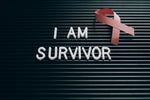
RFID vs. QR Codes: A Guide to Choosing the Right Wristbands
In the last few years, the demand for wristbands with a technological component has increased. RFID, barcodes, and QR codes have all found their way onto wristbands for events, fundraisers, and attractions. Both guests and event organizers have benefitted, but for different reasons. This article will compare RFID vs. QR codes on wristbands, and help you reach a decision for which you should choose.
RFID Wristbands
RFID wristbands feature a little chip embedded in the band which uses radio waves to identify people and objects when scanned. Businesses and events of all sorts have begun using RFID to add value. For instance, Disney now uses RFID in their Magic Bands. These allow guests to make purchases, enter the park, unlock their hotel rooms, and more. RFID wristbands have made keycards a thing of the past.
How does RFID work?
A simple explanation is as follows: RFID technology requires both tags and readers. Readers emit and receive radio signals. Tags use radio waves to communicate data to the reader. Guests can store information on the tags for their convenience. First, the reader must acknowledge the signal from the tag to secure the connection. Once connected, the reader collects the data stored on the tag. This data is then sent to a database in the blink of an eye, and all you see is that your admission has been validated.
Benefits of RFID Wristbands
- Increase revenue – when making a payment is as easy as tapping your wrist to a reader, people tend to make more payments. Who would have thought?
- Maximize profitability – RFID allows you to decrease the amount of manpower needed at your event, especially in terms of security.
- Boost speed of service – nobody enjoys standing in line. When entering an event and making a purchase only requires the tap of a wrist, lines move faster and people are happier.
- Eliminate cash management issues – events are going cashless with RFID. This eliminates the chance of theft and other fraud.
- Prevent fraudulent or counterfeit admission – It is extremely difficult to fraudulently enter an event when RFID is being used.
For more information about our line of RFID wristbands, or to receive a quote, be sure to fill out the form below.
QR Code Wristbands
QR code wristbands provide guests with easier access to specific web pages pertaining to your event or business. For instance, a tavern might host a trivia night where you receive a wristband upon entry. When guests need a beverage , they can simply scan the QR code on their wristband using a smart device rather than take valuable time away from the competition. From there, they are led to a menu where they can order refreshments without having to approach the bar.

How do QR codes work?
Each QR code consists of black dots and squares that convey different pieces of data. Upon being scanned, the code is translated into human-readable data. This takes just moments. Most smartphones have built-in QR code readers. If not, there are free apps that can be downloaded for free.
Why use QR code wristbands?
QR code wristbands add a digital component to your event or attraction. Using a QR code on a wristband, guests have more ways to interact and make transactions. This, in turn, allows you to simplify common processes and potentially reduce operational costs. At the same time, QR code wristbands can also increase security for you and your guests. Upon scanning the QR code, you can ensure that the wristband is not being used more than once.
For more information, or to receive a quote, fill out the form below.
RFID vs. QR Code Wristbands: Which one is right for me?
If you need a wristband that can enhance the security and convenience of your event or organization, then we recommend RFID wristbands. These bands give you the tools you need to run more efficient operations, eliminate the need for cash, and reduce wait times for guests while also providing valuable guest information.
For a cost-effective way to secure your event and allow guests an easy way to digitally interact, QR code wristbands might be right for you. Using these, you can simplify common processes associated with your event or attraction and possibly reduce operating costs.
Share
Leave A Comment









Your email address will not be published. Required fields are marked with *